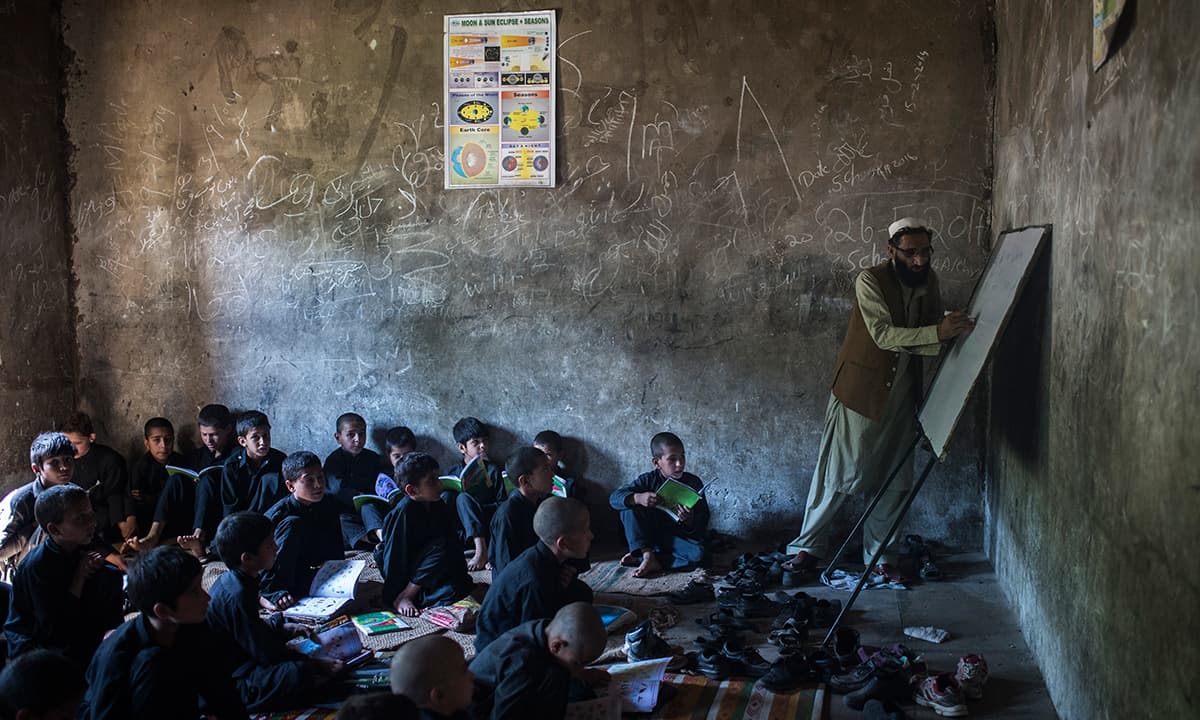
Up, up and above they carried Daulat to her father’s home. Daulat’s soul is just 18, on the cusp of adulthood, the best years of her life. But her lifeless body has to be carried on foot from Pallas to Jijal village, in Kohistan – land of the mountains.
Daulat’s brother, with four other men, carry Daulat on their shoulders. They traverse across the mighty Indus on swinging wooden bridges and over large rocky terraces of ruthless mountains. The men take small breaks and change positions when rain showers them with stones. At night they stop and guard Daulat’s eternal bed. Moonlight peeks through the tips of three mighty mountain ranges – Karakoram, Hindu kush and Himalayas – teasing the peaks to try and hide its luminescence.

When the sun comes up, the men resume walking. There is very little conversation. A traditional fable is on everyone’s mind.
Daulat’s brother and a couple of others are sick. But stopping means inviting death. Daulat and her father would never forgive them. Around them, trees dance in an ancient trance, urging them to go on.
In the distance they can see Jijal, and in Jijal, they can Daulat’s father, beckoning her to rest beside him forever. The crack of shovel hitting the gravel fills the air. The shovel digs in and emerges with a mound of dirt of Daulat’s childhood home.
Daulat’s brother and his co-travellers lower Daulat into the earth. Daulat is finally home.

Such are the ways of the mountains of Kohistan. From the dead to those who inhibit the hauntingly beautiful valley of Kohistan – transportation is always a rite of passage.
You can’t see any women in Kohistan. They stay hidden. Inside the walls of their homes. But only until they die.
Under Kohistani tradition, when a married woman passes away, she has to be buried in her parent’s home. Relatives carry the body for days, crossing mountains and rivers to reach the woman’s paternal home for burial.
The landscape in Kohistan is hauntingly beautiful but basic facilities tragically horrible. Perhaps this is why, with the lowest literacy rate and human development index in Pakistan, Kohistan is described as one of the most backward regions of the country.

Except for a few, most villages in Kohistan require hours and hours of walking. Even those like Pattan and Dassu, that lie near the main Karakoram highway remain underdeveloped. There are no hospitals in the entire region, except for small rural healthcare centres. When not dysfunctional, these rural healthcare centres are only able to provide something akin to first aid.
For anything more serious than a fever, residents have to travel to larger cities like Mansehra and Abbottabad, hundreds of kilometres and at least half a day’s drive away.

Kohistan’s inaccessibility – both physical and otherwise – remains one of the prime reasons (besides governments neglect) behind the region’s inability to develop. As one travels towards Kohistan from Besham – an important pit-stop on the Karakoram highway where national trade routes come to join – cellular service also disappears and unpleasantly large phones with antennas become a frequent sight.
Schools in Kohistan were built decades ago. Whatever was left of those buildings was badly damaged in the 2005 earthquake and has not been repaired since. It is common for children to walk for miles to get to school, only to collapse from dehydration while attending the morning assembly. Students walk to waterfalls located at some distance and bring back drinking water for schoolchildren to use throughout the day.

Unlike Pattan town that lies right on the Karakoram highway, Pallas is an hour’s drive away. It’s a treacherous drive, reachable only by jeep. In the evening light, the muddy floors of schools reminded me of abandoned caves.
Most of the local schools offer primary education. I met a father who had four daughters, and contrary to popular notions was worried about their education.
Government officials, on the other hand, conveniently cited fatwas by local clerics (against sending girls to schools) as an excuse for their ineptitude. Most of the fatwas were against co-education and their seriousness was exaggerated by government officers. They use clerics to keep complaining parents at bay.

Just like the rest of the country, there are ghost schools in Kohistan as well. Teachers, appointed for petty political favours, receive salaries without having to do a single day’s work.
Perhaps it is Kohistan’s remoteness that has kept modernity away. On one hand, decisions made in Islamabad or even Peshawar don’t deem to have any impact here, on the other, it seems the region and its people are living in an era that has lived past its natural life. Despite our national depravities, modernity seems to have brought significant changes in our collective lifestyles but Kohistanis seem to be relatively untouched by it. Perhaps it is time for the Kohistanis to open up. Perhaps it is time for us to build better bridges.
The writer is a Lahore-based independent journalist and photographer.



